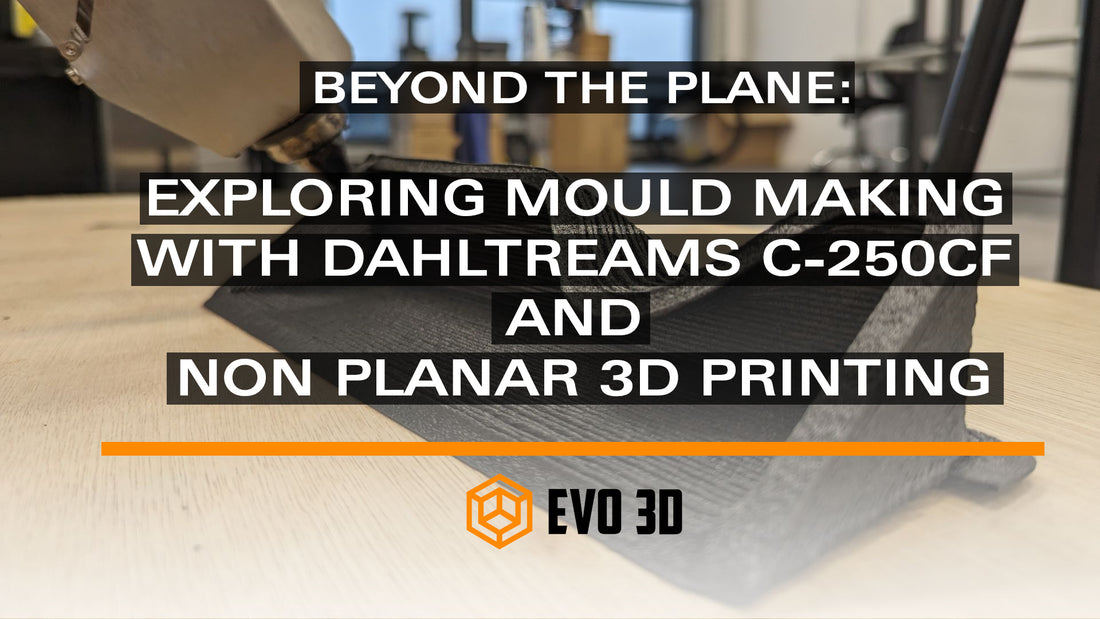Beyond the Plane: Exploring Mould Making with Dahltram's C-250CF and Non-Planar 3D Printing

In recent years, the world of manufacturing has been revolutionized by the advent of 3D printing technology. Today, we're diving into an even more specialised realm within this industry, exploring the use of Dahltram's C-250CF Tooling Resin with our non-planar 3D printer on a robot armature to create intricate, durable moulds.
Overview of Dahltram's C-250CF Tooling Resin
Dahltram's C-250CF Tooling Resin has been a game-changer for those seeking high-performance, carbon fibre-reinforced moulding solutions. The epoxy-based, high-temperature resistant composite is designed for the production of high-quality, dimensionally stable moulds. Its excellent surface finish and superior mechanical properties make it an optimal choice for advanced tooling applications at low temperatures.
Benefits of Non-Planar 3D Printing with Robot
Non-planar 3D printing takes additive manufacturing to a whole new level by allowing the printer to create more diverse shapes and structures compared to regular planar printing. Add on the large reach of robotic arm with a 5 dimensional head, you can print large complex mould shapes rapidly without having to sacrifice the design to more conventional printing techniques.
Bringing it Together: Dahltram's C-250CF and Non-Planar 3D Printing
Pairing Dahltram's C-250CF Tooling Resin with non-planar 3D printing technology promises excellent results for the creation of high-performance moulds. The resin's carbon fiber reinforcement, coupled with the dimensional stability and intricate detail achievable through non-planar printing, results in moulds that can withstand demanding production environments while delivering high-precision results. All that is required after printing is some post processing to form the required surface finish, currently the market leaders are using CNC machines to do this.
Conclusion
As manufacturing technology continues to advance, it's clear that solutions like Dahltram's C-250CF Tooling Resin and non-planar 3D printing will lead the way in creating high-quality, resilient moulds. By leveraging these techniques, businesses can create superior products more efficiently than ever before.
